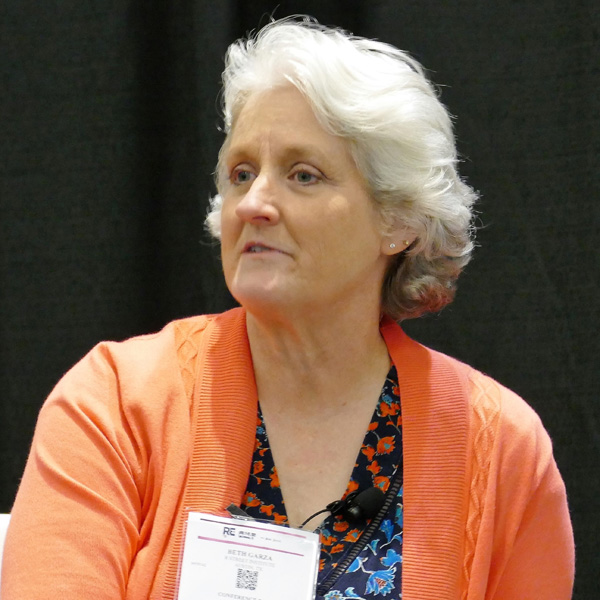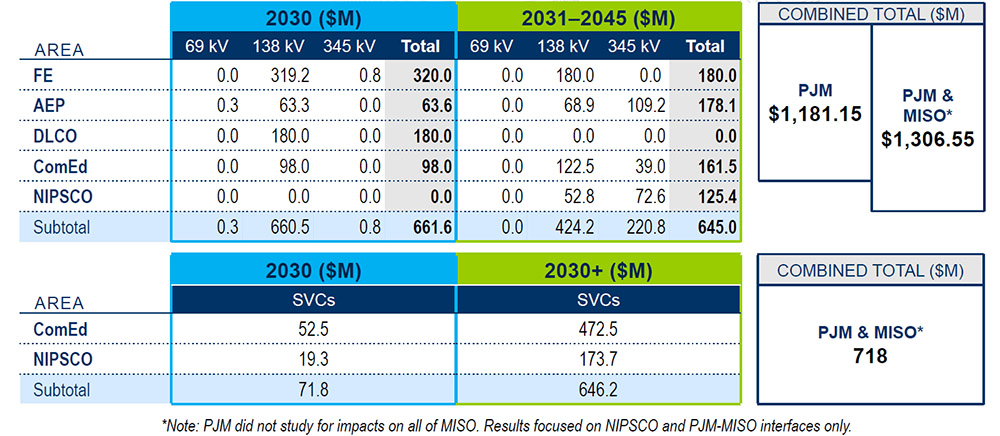FERC failed to explain why the DFAX method should be used to allocate the costs of two North Jersey transmission projects but not for a similar project in Artificial Island, the D.C. Circuit Court of Appeals ruled last week, partially supporting appeals by Consolidated Edison (NYSE:ED), the New York Power Authority and two merchant transmission operators (15-1183).
The court also rejected PJM’s “de minimis” exemption for applying DFAX, short for “solution-based distribution-factor analysis.”
But the court’s Aug. 9 order rejected a related challenge by the New Jersey Board of Public Utilities, ruling that Public Service Electric and Gas (NYSE:PEG) customers would foot the bill for the North Jersey projects after Con Ed terminated its use of the “PSEG wheel,” an agreement that allowed the utility to deliver power to New York City through PSE&G transmission.
The 43-page order addressed 13 petitions for review challenging 20 FERC orders, “involve numerous parties, implicate a series of related legal issues and arise from a complex procedural history,” the court said.
Bergen-Linden, Sewaren Projects
Much of the case involves $1.3 billion in transmission upgrades authorized by PJM to address short-circuit problems between PSE&G’s Bergen and Linden switching stations and repairs to and around the utility’s Sewaren substation.
To address the short-circuit problem, PJM directed PSE&G to expand the Bergen-Linden corridor into a double-circuit line with higher voltages. The project incidentally also provided additional protection against thermal overloads.
Con Ed and NYPA — as well as Linden VFT and Hudson Transmission Partners, operators of two merchant transmission facilities — challenged FERC’s orders approving PJM’s five cost allocations from 2014 to 2017. Linden and Hudson reroute electricity from New Jersey into the New York market and resell it at a profit when PJM prices are lower than New York’s.
Before they were relieved of liability for the Bergen-Linden and Sewaren projects, the four complainants — which the court labeled the “New York entities” — had been assessed approximately $115 million, which was paid.
PJM allocated most of the costs of the Bergen project ($763 million of $1.2 billion), and all the costs of the Sewaren project ($125 million), via DFAX. In 2014, PJM assigned most of the DFAX costs for Bergen-Linden to Con Ed ($629 million), with the rest allocated to Hudson ($69 million), PSE&G ($52 million) and Linden ($13 million). Sewaren’s costs were split between Con Ed ($64 million) and Linden ($61 million).
The DFAX method models how electricity will flow across a new transmission facility at moments of peak grid use and assigns costs proportionally, based on the projected use of the facility in each transmission zone of the PJM grid. DFAX was designed to apply to “flow-based” projects to increase transmission capacity. But the Bergen-Linden and Sewaren reliability projects were non-flow-based.
The New York entities complained that PJM’s allocations violated the cost-causation principle because the projects were intended to improve PSE&G’s infrastructure, but other parties were assigned most of the costs.
After FERC denied its request for rehearing on the cost allocation, Con Ed notified PSE&G that it would not renew their wheeling agreement. As a result, PJM eliminated Con Ed’s cost liability, reassessing Bergen-Linden’s DFAX costs to Hudson ($634 million), Linden ($132 million) and PSE&G ($128 million). Hudson and Linden responded by converting their firm withdrawal rights to non-firm, absolving them of cost responsibility under DFAX and leaving their costs with PSE&G.
In 2018, FERC reconsidered its use of DFAX on the Artificial Island transmission project, which was designed to address stability problems for three nuclear plants in South Jersey. On rehearing, FERC concluded that the beneficiaries of at least some non-flow-based projects are “not necessarily captured” by the DFAX method and directed PJM to adopt a different cost allocation method for stability-related projects. FERC approved PJM’s revised “stability deviation” method — which identifies which loads would most benefit from projects that address stability issues — in February 2019. (See FERC: Stability Deviation Method Best for Artificial Island.)
But FERC continued to defend the DFAX method for short-circuit projects like Bergen-Linden and Sewaren.
The New York entities contended that because the Artificial Island, Bergen-Linden and Sewaren projects all addressed non-flow-based issues, their costs should all have been allocated similarly.
FERC’s Artificial Island ruling concluded that “stability is analytically unique compared to voltage or thermal overload problems,” which are both flow-based. But the commission did not address whether short-circuit projects should also be treated differently from flow-based, the court said. “Therefore, FERC could not rationally explain its decision to treat Bergen-Linden and Sewaren differently from Artificial Island by simply pointing to its earlier finding that ‘stability is analytically unique compared to voltage or thermal overload problems.’ Instead, FERC needed to explain why stability is ‘analytically unique’ compared to short-circuit issues,” the court said.
In rehearing on Linden’s protest, FERC insisted DFAX should still be used to assign Bergen-Linden’s costs because it was similar to a thermal overload project. But “FERC did not adequately explain why that similarity mattered,” the court said. “Short-circuit issues, not thermal overloads, were the primary impetus for [Bergen-Linden]. While [Bergen-Linden] expanded the grid’s overall capacity, the same is true of Artificial Island.
“Given the similarities between the projects, basic rule-of-law principles required FERC to justify its different treatment of the projects. It needed to explain why, in contrast to Artificial Island, the costs of [Bergen-Linden] and Sewaren should be assigned via DFAX to the utilities whose electricity flows across the upgraded facilities, rather than to the projects’ other beneficiaries,” the court continued. “We do not hold that the use of the DFAX method for short-circuit projects violates the cost-causation principle per se. On remand, FERC may be able to provide a more satisfactory explanation of the distinction between stability-related projects and those that address short-circuit issues and to articulate why DFAX cost allocations are appropriate for the latter but not the former. But the commission ‘must provide an adequate explanation to justify treating similarly situated parties differently.’”
De Minimis
The court rejected the New York entities’ challenges to the use of netting and peak-load assumptions as part of the DFAX model, but it agreed with their complaint over the de minimis threshold, which exempts transmission zones with a distribution factor below 1% of cost responsibility.
Because distribution factors measure a zone’s use of a facility relative to its total load, the de minimis exception depends on the size of the zone, not on the zone’s share of the facility’s total flow, the court said.
A zone with load of 1,000 MW that uses 9 MW of a 30-MW facility — almost one-third of the total flow — would be exempted because the distribution factor would be only 0.9%.
“The de minimis threshold exempts zones from bearing any costs based on their load size — a quality unrelated to the burdens they impose on or the benefits they receive from any individual facility. And in so doing, it unduly discriminates against small zones, which must absorb higher cost allocations after large zones are exempted,” the court said. “Peak load sizes vary greatly across the relevant zones, which makes the de minimis exception border on absurd.”
PSE&G’s peak load is about 11,000 MW versus Hudson’s 320 MW. “So if PSE&G used 100 MW of flow across a transmission facility (yielding a distribution factor slightly under 1%), and if Hudson had 4 MW of flow across the same facility (yielding a distribution factor slightly over 1%), then PSE&G but not Hudson would be exempt from paying any of the facility’s costs, even though PSE&G derived 25 times more of the benefits,” the court said. “And because the large PSE&G would not have to pay any costs of the facility, the small Hudson would have to bear a substantially greater share of those costs.”
NJ BPU Challenge Rejected
The New Jersey BPU challenged FERC’s orders reallocating costs for the Bergen-Linden project from Con Ed, Hudson and Linden to PSE&G.
The court said FERC correctly determined that Con Ed did not have to pay project costs after the termination of the service agreements, noting that the Bergen-Linden project was planned solely by PJM.
The court said the BPU presented a “powerful argument” that Linden’s relinquishment of its firm withdrawal rights and its election of firm point-to-point service allowed it to receive the same benefits from the Bergen-Linden project without any of the costs.
But it said it lacked jurisdiction to consider it because the BPU had not first raised the issue in its rehearing requests with FERC.
The BPU also contended FERC conducted a “siloed analysis” that did not consider the “total effect” of its orders, which it said left New Jersey ratepayers with an “exceedingly disproportionate share” of the costs.
“But FERC did perform the kind of back-end analysis that the New Jersey board claims was required,” the court said. “FERC recognized that the [Bergen-Linden] project was planned by PJM, and [it] relied on PJM’s statement that the project would still be needed in New Jersey ‘even if there were no flows on the transmission facilities interconnecting New York and New Jersey.’”
Orders Vacated
The court vacated FERC’s denial of two Linden complaints and remanded them for further proceedings. It also vacated the commission’s denial of Con Ed’s complaint and remanded it for further proceedings on the de minimis issue.
It also vacated FERC’s 2020 order (ER17-950) reallocating the cost of the North Jersey projects reflecting the end of the PSEG wheel and rejecting Linden’s challenge and remanded it on both the Artificial Island and de minimis issues. (See FERC Rebuffs Challenges to PJM Tx Cost Allocation.)
“FERC did not raise a procedural bar to the New York entities’ challenges there, instead rejecting them on the merits for reasons we have found defective,” the court said. “On remand, FERC may consider in the first instance whether the challenges to PJM’s 2017 cost reallocation are procedurally barred.”



